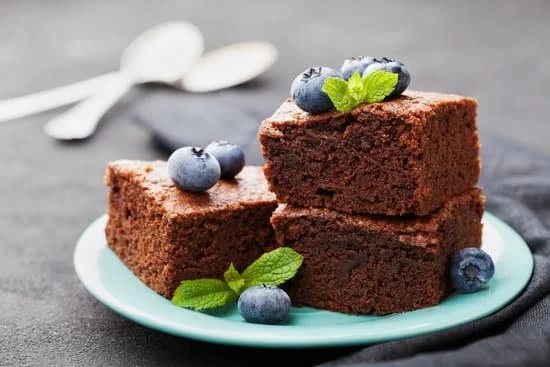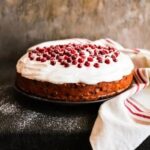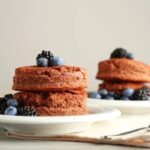Cake decorating is an art that requires precision, creativity, and attention to detail. Whether you are a professional baker or an aspiring home baker, having a cake decorating rubric is essential for achieving consistent and high-quality results.
A cake decorating rubric serves as a guide that outlines the criteria and expectations for creating beautifully decorated cakes. This article will delve into the importance of a cake decorating rubric, how to create an effective one, explore its elements, and highlight its benefits in the baking industry.
In the world of cake decorating, consistency is key. A cake decorating rubric provides a set of standards that ensure every cake is decorated to perfection. It establishes clear guidelines for techniques, design elements, color choice, and overall presentation. With a rubric in hand, bakers can easily evaluate their work and make necessary improvements. Furthermore, a cake decorating rubric allows bakers to communicate their expectations with clients or team members in a clear manner.
Creating an effective cake decorating rubric involves considering several key factors. These factors include identifying the purpose of the rubric, determining the specific criteria for evaluation, establishing levels of proficiency or excellence, and designing an organized layout. The rubric should be comprehensive yet concise so that it can be easily understood by anyone using it. It should also be adaptable to different styles of cake decoration and evolving trends in the industry.
An exceptional cake decorating rubric comprises various elements that ensure consistent quality across all cakes. These elements may include design creativity, execution of techniques such as piping or fondant work, color harmony, level of difficulty, neatness and cleanliness in presentation, as well as overall visual impact. By evaluating each element individually with specific criteria and rating scales within the rubric framework, bakers can assess their skills objectively and strive for continuous improvement.
As we delve deeper into this article, we will explore case studies of successful implementations of cake decorating rubrics in bakeries across different scales. Additionally, we will provide a step-by-step guide for designing a comprehensive rubric that meets individual needs and goals. By avoiding common mistakes in rubric development and maximizing its usefulness through tips and tricks, bakers can elevate their cake decorating skills to new heights.
How to Create an Effective Cake Decorating Rubric
To create an effective cake decorating rubric, there are several key factors that need to be considered. By keeping these factors in mind, you can design a rubric that accurately assesses the skills and techniques of cake decorators. Here are some important factors to consider when creating a cake decorating rubric:
- Define the Criteria: The first step in creating a cake decorating rubric is to clearly define the criteria that will be assessed. This includes determining what specific skills and techniques are important for successful cake decorating. For example, you may include criteria such as frosting smoothness, piping technique, level of difficulty, creativity, and overall appearance.
- Set Clear Expectations: It’s crucial to set clear expectations for each criterion in the rubric. This means providing detailed descriptions and examples of what constitutes each level of performance. For instance, if one criterion is piping technique, you might provide examples of poor piping (e.g., uneven lines or inconsistent pressure) as well as examples of excellent piping (e.g., clean lines and consistent pressure).
- Use a Rating Scale: A rating scale is an essential component of a cake decorating rubric as it allows for consistent and fair assessment across multiple cakes or decorators. Consider using a numerical scale, such as 1-5 or 0-10, with detailed descriptors for each level of performance. This will help ensure consistency and objectivity in evaluating different aspects of cake decoration.
Additionally, it’s important to regularly review and update the rubric based on feedback from assessors and decorators. As trends change and new techniques emerge in cake decoration, it’s necessary to adapt the rubric to capture these developments accurately.
By considering these key factors when creating a cake decorating rubric, you can develop a comprehensive tool that enables accurate evaluation of the skills and techniques used by cake decorators. This not only benefits individual decorators by providing constructive feedback for improvement but also enhances overall industry standards in the baking community.
Exploring the Elements of an Exceptional Cake Decorating Rubric
Clear Criteria
One essential element of an exceptional cake decorating rubric is clear criteria. This means that each aspect of cake decoration should be clearly defined and explained in the rubric. For example, if one criterion is “smoothness of icing,” it should be specified what exactly constitutes smooth icing.
This could include no visible air bubbles, a consistent texture, and no visible icing lines. By having clear criteria, both the cake decorator and the evaluator will have a better understanding of what is expected.
Variety of Skills
Another important element to consider when creating a cake decorating rubric is to include a variety of skills or techniques. Cake decoration encompasses various aspects such as piping, fondant work, creating edible decorations, and more. Including these different skills in the rubric ensures that decorators are evaluated on their proficiency in all areas, rather than just one particular skill. This will help identify strengths and weaknesses and provide valuable feedback for improvement.
Scoring System
A well-designed scoring system is crucial for an exceptional cake decorating rubric. The scoring system should be fair and consistent to accurately reflect the decorator’s performance. A common method is using a numerical scale from 1 to 5 or 1 to 10, with each score representing a certain level of achievement.
However, it’s important to clearly define what each score entails to avoid confusion or inconsistency in evaluations. It may also be helpful to provide specific examples or benchmarks for each score level to ensure consistency among evaluators.
Overall, exploring the elements of an exceptional cake decorating rubric can greatly contribute to its effectiveness. Clear criteria allow decorators and evaluators to have a mutual understanding of expectations, while including a variety of skills provides a comprehensive evaluation. Additionally, establishing a fair and consistent scoring system helps ensure accurate assessment across all evaluations. When these elements are thoughtfully considered during the creation of a rubric, it enhances the usefulness and effectiveness of the evaluation process.
The Benefits of Using a Cake Decorating Rubric in the Baking Industry
A cake decorating rubric provides numerous benefits to those in the baking industry. By using a rubric, bakers and cake decorators can ensure consistency and quality in their products, which is essential for customer satisfaction and building a reputable brand. Here are some key benefits of using a cake decorating rubric in the baking industry:
- Consistency and Quality Control: Using a rubric allows for consistent assessment of cake decorations across different batches or orders. It provides clear guidelines on what is expected in terms of design, technique, and overall presentation. This helps maintain a high level of quality control and ensures that every cake leaving the bakery meets the desired standard.
- Efficient Training and Evaluation: A cake decorating rubric serves as an effective tool for training new staff members or evaluating existing ones. It provides a standardized framework for teaching and assessing different aspects of cake decoration. New decorators can refer to the rubric as they learn, while managers can use it to provide constructive feedback during evaluations.
- Customer Satisfaction: An exceptional cake decoration enhances the overall experience for customers, making their special occasions even more memorable. By using a rubric, bakeries can consistently deliver beautifully decorated cakes that meet or exceed customer expectations. This not only increases customer satisfaction but also leads to positive word-of-mouth referrals and repeat business.
In order to fully reap these benefits, it is important to design a comprehensive cake decorating rubric that covers all relevant elements of cake decoration – from design creativity to technical skills. The next section will provide a step-by-step guide on how to create such a rubric, ensuring maximum effectiveness in improving cake decorating skills in the baking industry.
Step-by-Step Guide
To create an effective and comprehensive cake decorating rubric, there are several key factors to consider. By following a step-by-step guide, you can design a rubric that accurately assesses the skill and creativity of cake decorators. This section will outline the process of creating a cake decorating rubric, highlighting important considerations along the way.
Determine the Assessment Criteria
The first step in designing a comprehensive cake decorating rubric is to determine the assessment criteria. This involves identifying the specific skills and attributes you want to measure in cake decorating. Consider elements such as icing technique, fondant work, piping skills, and overall design composition. By breaking down these criteria into specific subcategories, you can create a more detailed assessment tool.
Assign Weightage and Levels of Achievement
Next, assign weightage to each criterion based on its importance in cake decorating. For example, icing technique may be deemed more crucial than color choice. Once weightage is assigned, establish different levels of achievement for each criterion. These levels could include “excellent,” “good,” “satisfactory,” and “needs improvement.” Clearly defining what constitutes each level will ensure consistent evaluation across different cakes and decorators.
Create Description for Each Level
To make the rubric easier to understand and use, provide clear descriptions for each level of achievement within each criterion. These descriptions should specify what qualities or outcomes are expected at each level. For example, under the icing technique criterion, an excellent level may describe smooth and flawless icing with no visible marks or air bubbles.
Include Room for Feedback
In addition to assessing performance, a comprehensive cake decorating rubric should also include space for feedback and comments. This allows decorators to understand their strengths and areas for improvement. It is essential to provide constructive criticism that helps decorators grow their skills without demotivating them.
By following this step-by-step guide, you can design a comprehensive cake decorating rubric that accurately assesses the skills and creativity of cake decorators. Remember to regularly review and update the rubric as baking trends and techniques evolve to ensure it remains relevant and effective in evaluating cake decoration skills.
Case Studies
One of the most effective ways to understand the benefits and effectiveness of a cake decorating rubric is by examining real-life case studies of its successful implementations in bakeries. These case studies provide valuable insights into how rubrics can enhance the quality and consistency of cake decorations, as well as improve overall customer satisfaction.
In a case study conducted at a local bakery, the implementation of a cake decorating rubric resulted in significant improvements in the efficiency and accuracy of cake decorations. By using clear guidelines and criteria outlined in the rubric, decorators were able to consistently create visually stunning cakes that exceeded customer expectations. This not only helped the bakery stand out from its competitors but also led to an increase in customer loyalty and positive reviews.
Another case study examined a high-end boutique bakery that specializes in custom cake designs. Prior to implementing a cake decorating rubric, the bakery faced challenges in maintaining consistency across its various decorators.
However, after introducing a detailed rubric that outlined different design techniques and quality standards, decorators were able to align their work with the bakery’s aesthetic vision. As a result, customers praised the bakery for its consistent and flawless cake decorations, leading to increased demand for their services.
These case studies demonstrate how an effective cake decorating rubric can positively impact both small-scale local bakeries and larger boutique establishments. By providing clear guidelines and standards for decorators to follow, these rubrics ensure consistent quality across all cakes produced by the bakery. Customers appreciate this level of attention to detail, leading to increased trust, customer satisfaction, and business growth.
| Benefits | Implementation Methods |
|---|---|
| Improved efficiency and accuracy of cake decorations | Clear guidelines and criteria outlined in the rubric |
| Enhanced customer satisfaction and loyalty | Consistent quality across decorators |
| Increase in positive reviews and demand for services | Aesthetic alignment with bakery’s vision |
Common Mistakes to Avoid when Developing a Cake Decorating Rubric
Developing a cake decorating rubric can be a challenging task, but avoiding common mistakes can help ensure that the rubric effectively measures and evaluates the skills of cake decorators. When developing a cake decorating rubric, it is important to consider the following common mistakes and take steps to avoid them:
- Lack of Clarity: One of the most common mistakes when developing a cake decorating rubric is failing to provide clear and concise criteria for evaluation. It is crucial to clearly define what constitutes each level of performance, from outstanding to unsatisfactory. This helps eliminate any confusion and ensures that all evaluators are on the same page when assessing cakes.
- Unbalanced Criteria: Another mistake to avoid is creating an unbalanced rubric with criteria that do not accurately reflect all aspects of cake decorating. For example, if a rubric places too much emphasis on visual appeal but neglects taste and texture, it may not provide a comprehensive assessment of a decorator’s skill. It is important to include criteria that cover all key aspects of cake decoration.
- Subjectivity: Developing a rubric that is overly subjective can lead to inconsistent evaluations and unreliable results. To prevent this mistake, it is essential to create objective criteria that can be easily observed and measured by different evaluators. Providing specific examples or benchmarks for each level of performance can also help reduce subjectivity in the evaluation process.
| Common Mistake | Avoidance Strategy |
|---|---|
| Lack of Clarity | Clearly define each level of performance in the rubric criteria. |
| Unbalanced Criteria | Ensure that all important aspects of cake decorating are adequately covered in the rubric. |
| Subjectivity | Create objective criteria and provide specific examples or benchmarks for each level of performance. |
By taking the time to carefully develop a comprehensive and well-structured rubric, cake decorators and evaluators can avoid these common mistakes and create a tool that accurately assesses and improves cake decorating skills. A properly designed rubric not only provides guidance to decorators but also promotes consistency and fairness in evaluation processes.
Maximizing the Usefulness of a Cake Decorating Rubric
Creating a cake decorating rubric is just the first step in improving your bakery’s cake decorating skills. To truly maximize its usefulness, it’s important to implement some tips and tricks that will help you get the most out of your rubric.
Firstly, it is essential to regularly review and update your rubric. As new trends emerge and customer preferences change, it’s important to ensure that your rubric reflects these shifts in the baking industry. Take the time to evaluate whether certain criteria need to be added or modified to accurately assess your decorators’ skills. By keeping your rubric updated, you can ensure that it remains relevant and effective in guiding your decorators towards excellence.
Another tip for maximizing the usefulness of a cake decorating rubric is to make it accessible and easy to understand for all staff members involved in the cake decorating process. This includes not only the decorators themselves but also managers, supervisors, and even other bakery staff members who may provide input or feedback on cake designs.
Clear instructions, detailed descriptions of each criterion, and examples of exemplary work can help everyone understand and adhere to the standards set by the rubric.
Additionally, consider using your cake decorating rubric as a training tool. Provide workshops or training sessions where decorators can learn about the criteria outlined in the rubric and how they can improve their skills based on these standards.
Encourage open communication among staff members so that they can share tips and techniques that have worked well for them personally. By promoting a culture of continuous learning and improvement through your rubric, you can foster an environment where decorators are constantly striving for excellence.
Conclusion
In conclusion, incorporating an effective cake decorating rubric into your baking process can greatly elevate your cake decorating skills. By carefully considering key factors such as clarity, specificity, and flexibility when creating the rubric, you can ensure that it provides valuable guidance for both novice and experienced decorators alike. The elements of an exceptional rubric, including categories such as creativity, technique, and presentation, will help to focus and refine your decorating abilities.
Using a cake decorating rubric in the baking industry offers numerous benefits. It promotes consistency and quality control by setting clear expectations for decorators across different projects or teams. A well-designed rubric also provides a framework for feedback and evaluation, allowing for continuous improvement and growth in individual skills. Additionally, clients and customers will appreciate the enhanced professionalism and attention to detail that comes with using a rubric as a guide.
Designing a comprehensive cake decorating rubric requires careful planning and consideration. By following a step-by-step guide that includes defining categories and criteria, providing specific examples, and assigning appropriate weights or scoring systems, you can create a rubric that is fair, balanced, and aligned with your specific needs.
While developing a cake decorating rubric, it is important to be aware of common mistakes to avoid. These may include using vague language or overly complex criteria that are difficult to assess accurately. Striking the right balance between being too rigid and too flexible is crucial when determining the level of detail in your rubric.
To maximize the usefulness of your cake decorating rubric, keep in mind additional tips and tricks such as regularly reviewing and updating the rubric to ensure its relevance over time. Encourage collaboration among decorators by seeking their input on the effectiveness of the rubric or conducting regular calibration exercises where multiple decorators evaluate the same cakes using the same rubric.
Frequently Asked Questions
How do you judge cake decorating?
Cake decorating can be judged based on several factors. One important aspect is the overall appearance of the cake. This includes the smoothness and evenness of the frosting or fondant, as well as the precision and neatness of any decorations or piping work. Attention to detail is crucial, and a well-decorated cake should have clean lines and symmetrical designs.
Another aspect to consider is color coordination and creativity in the design. A visually appealing cake will have well-chosen colors that complement each other and enhance the overall theme or concept. Lastly, taste plays a significant role in judging cake decorating since it’s not just about looks but also about flavor. The texture, moistness, and balance of flavors should all contribute to an enjoyable eating experience.
What are the 5 kinds of cake decorating?
There are various types of cake decorating that provide different results and require specific skills. First, there is buttercream frosting decoration, which involves using buttercream icing to create various designs such as rosettes, borders, or intricate piping work. Fondant covering is another method that involves rolling out a layer of fondant to cover the entire cake smoothly and allows for more intricate sculpting or modeling of shapes and figures on top.
Royal icing decoration utilizes a stiff icing made from egg whites and powdered sugar to create delicate lace-like patterns or intricate piped designs on cakes. Gum paste decoration involves using gum paste (an edible modeling material) to create flowers or other detailed decorations that can be placed on a cake for an elegant touch. Finally, airbrushing is a technique where food coloring is sprayed onto the surface of a cake using an airbrush tool to achieve stunning effects with gradients or realistic details.
What are the three essentials of cake decorating?
The three essentials of cake decorating lay the foundation for creating beautifully adorned cakes: preparation, practice, and creativity. Preparation involves ensuring you have all necessary tools and ingredients ready before starting the decorating process. This includes things like spatulas for applying frosting, piping bags and tips, fondant smoothers, and a variety of food colors for tinting icing. It’s crucial to plan the design in advance, gather supplies, and ensure that the cake itself is properly baked and cooled before beginning to decorate. Next, practice is key to improving cake decorating skills. Like any art form, it takes time and effort to develop proficiency.
Practicing different techniques regularly helps refine your abilities in piping, fondant manipulation, or any other approach you want to master. Experiment with different designs, colors, and textures to challenge yourself and expand your repertoire. Finally, creativity is essential for successful cake decorating. Having the ability to imagine unique designs and think outside the box is what sets exceptional decorators apart. Don’t be afraid to try new ideas or combine different techniques for original looks that showcase your personal style. Let your creativity flow while also considering the tastes and preferences of your clients or recipients.

Welcome to our cake decorating blog! My name is Destiny Flores, and I am the proud owner of a cake decorating business named Cake Karma. Our mission is to provide delicious, beautiful cakes for all occasions. We specialize in creating custom cakes that are tailored specifically to each customer’s individual needs and tastes.





